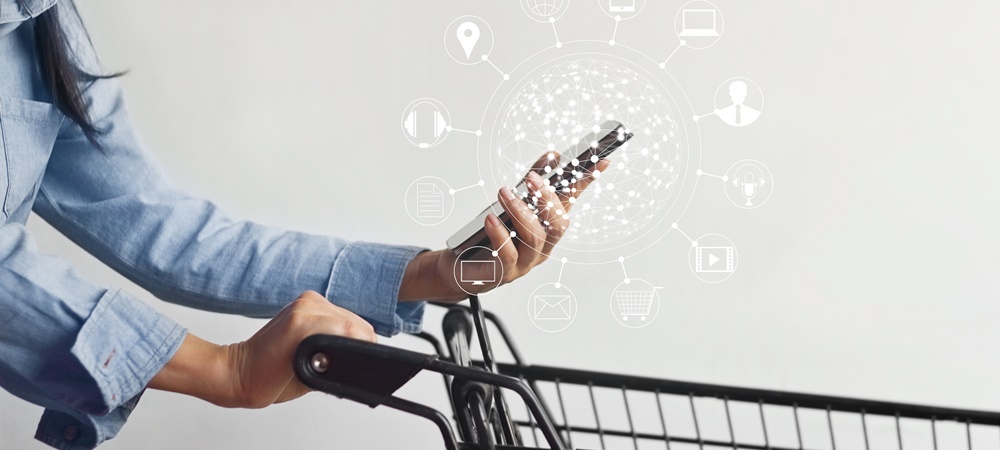It goes without saying that established bricks-and-mortar retailers are used to dividing their operations into front of house and back of house. As a result, there is still a lack of innovation in the back office, generally holding back many of today’s retailers from delivering the consistent digital omnichannel experience customers have come to expect.
In fact, two decades have passed since online retail started to take off. Modernising and digitising the back office has never been more critical as retailers face greater competition from their born-online counterparts. Technology has been essential for those turning their bricks-and-mortar establishments into a modern in-store experience for customers.
Retailers that still have outdated back office systems will find it harder to compete against start-ups born online. They do not typically support digital experiences and competitive strategy and, as a result, these companies are building new ecommerce platforms that are not seamlessly integrated with the back office.
For any omnichannel retailer, the real challenge comes in connecting systems, data sources, and processes to ensure competitive strategies align with the buyer experience. As an example, having access to valuable data from the accounting system leads to more successful generation of predictive models, and this then supports revenue optimisation and a better customer experiences.
Why optimisation and modernisation is more critical than ever
The most important customer in today’s retail environment is the plugged-in and omnichannel shopper. Over 70 per cent of omnichannel customers expect a consistent user experience and will use their mobile devices in-store for research.
Meeting and exceeding these expectations is a big challenge. To get their business, retailers have to be able to reach these customers on their smartphones or other digital devices and maintain an excellent user experience both online and in-store. To do this effectively, retailers need to bring together the front of the house with the back office, thinking strategically about how the two can combine to offer a more efficient service to the customer.
With massive online retailers making a move to offline stores and many online start-ups having great success, bricks-and-mortar stores have to compete with companies who are already providing their customers with a true omnichannel experience.
How to digitise the back office
Research has shown that customers who shop both in-store and online are worth 30 per cent more to retailers over their lifetime than customers who use only one channel. Retailers need to deliver improved digitisation at the front of house and in the back office to ensure a consistent experience for these buyers across all channels.
Some important factors to consider include:
- Replace your finance system if it is spreadsheet-heavy. As retailers grow, spreadsheets contribute less and less to the bottom line and they lose the ability to analyse data on multiple levels.
- Invest in digital solutions that support competitive strategy while eliminating time-consuming programming and errors.
- Optimise marketing strategies by ensuring back office systems have the capacity for predictive modelling.
- Measure the influence of marketing spending throughout the customers’ buying journey, across all channels, by making use of sophisticated metrics.
- Provide relevant and local information, such as inventory, to encourage customers to move from mobile ads to in-store conversions.
- Create an organisational structure that supports a consistent user experience for omni-channel shoppers, unifying offline and online marketing opportunities.
- Consolidate data and creative efforts and measure engagement.
- Prioritise channels and monitor cross-channel activity to get the most out of marketing spend by maximising reach.
Embracing the omnichannel opportunity
With a comprehensive integrated solution to align front of house and back office, retailers can embrace the opportunity seamless omnichannel shopping provides. A key action to have greater success reaching target markets is using information-driven marketing. Rather than supporting two or more siloed marketing budgets, attentions can be focused on one. Real-time evaluation can enable businesses to divide spend between online and offline efforts, maximising returns and delivering excellent customer experiences.
Omnichannel shopping is a dramatic change for retailers, but if executed properly, can revitalise a business. It cannot be done with a disjointed enterprise systems strategy where the focus is only on the front-end buyer experience. Companies can increase sales across all channels by tweaking marketing, making local and relevant data immediately available to customers and providing an accessible, relaxing digital experience for your consumers.
The investment into integrating back office and front-of-house operations will provide the highest return, paying for itself time and again.
 Claus Jepsen is the chief architect at Unit4.
Claus Jepsen is the chief architect at Unit4.
Want the latest retail news delivered straight to your inbox? Click here to sign up to the retailbiz newsletter.

